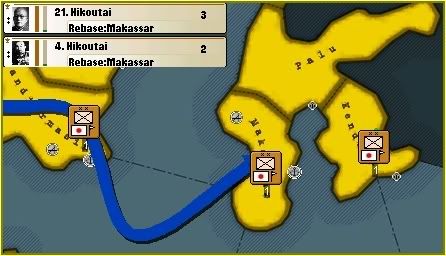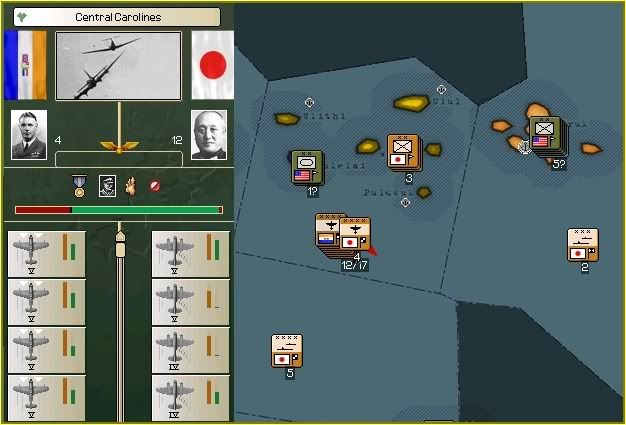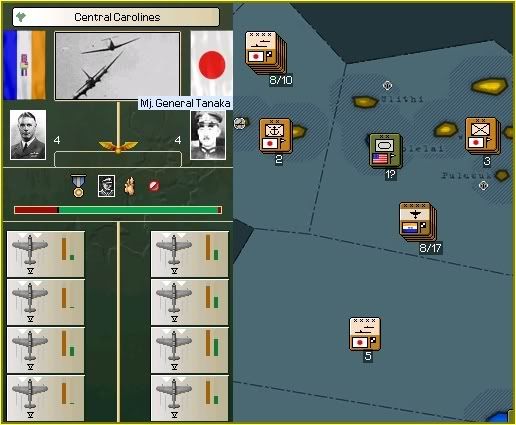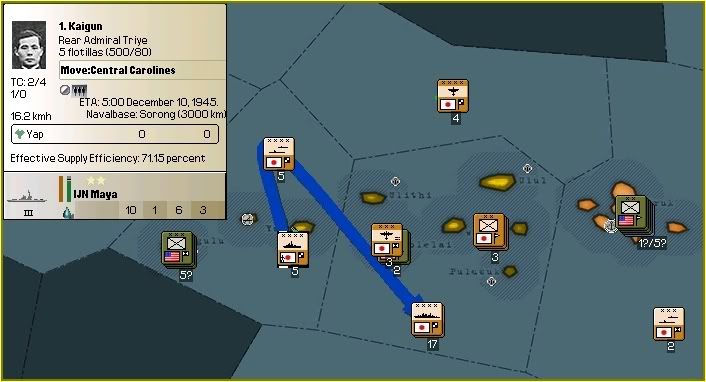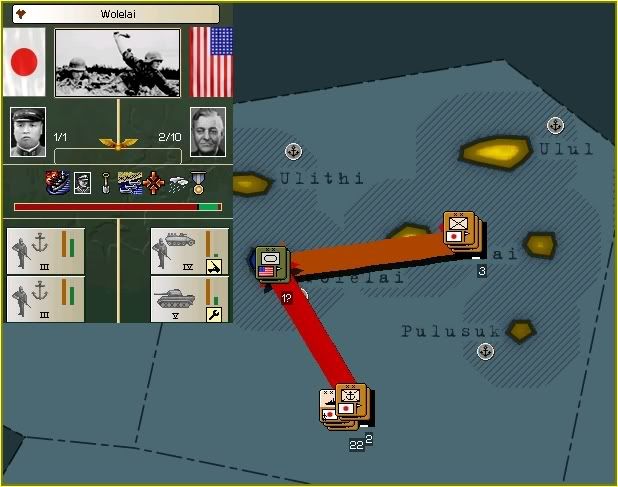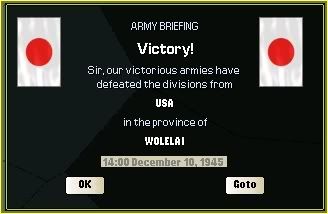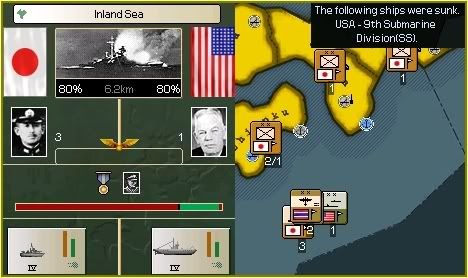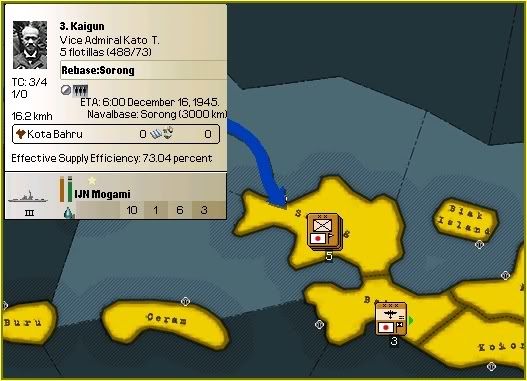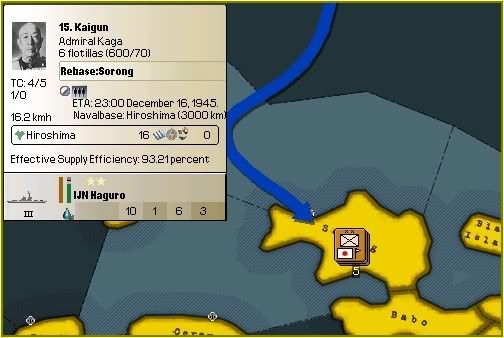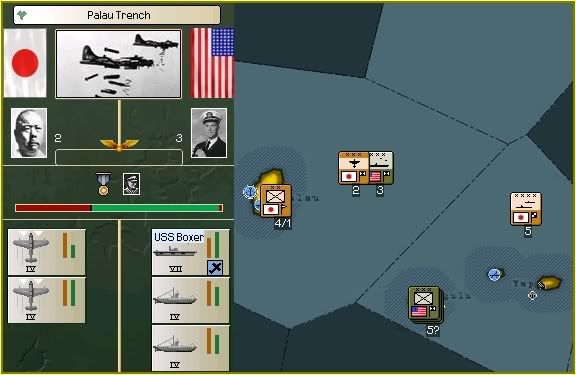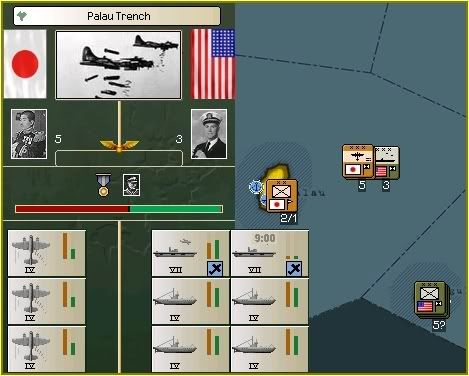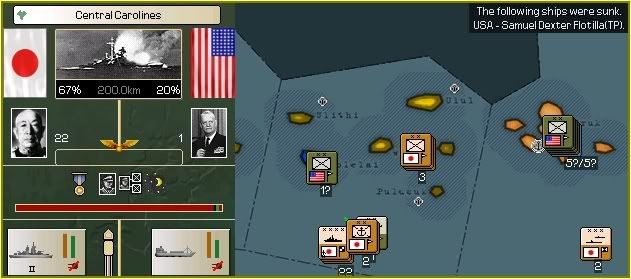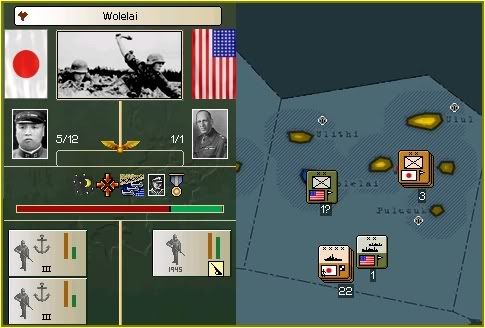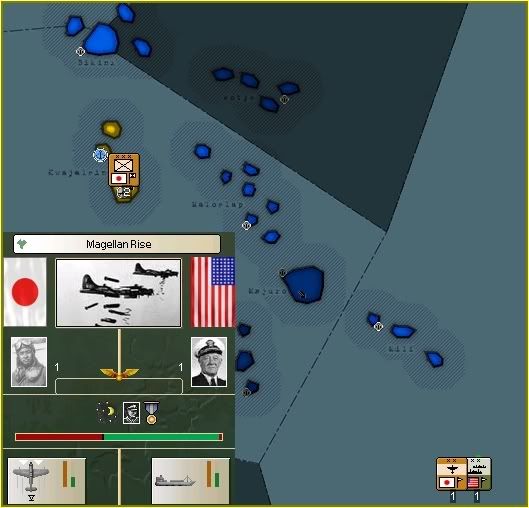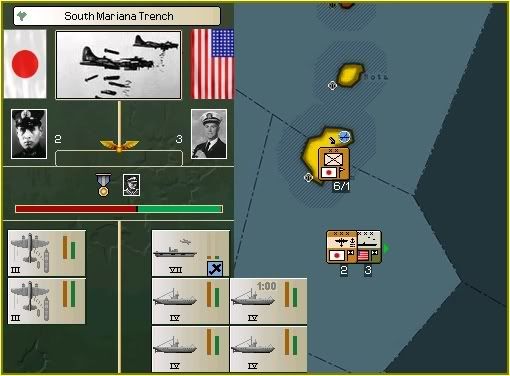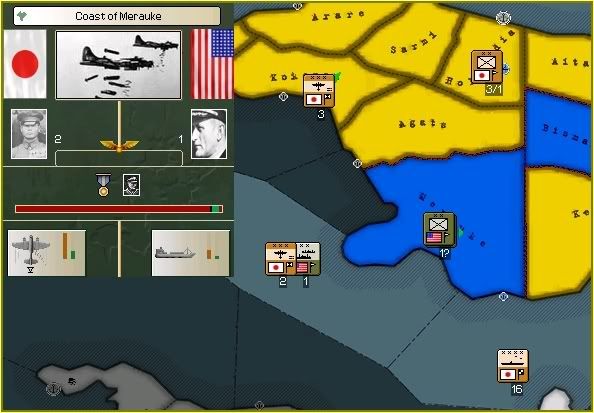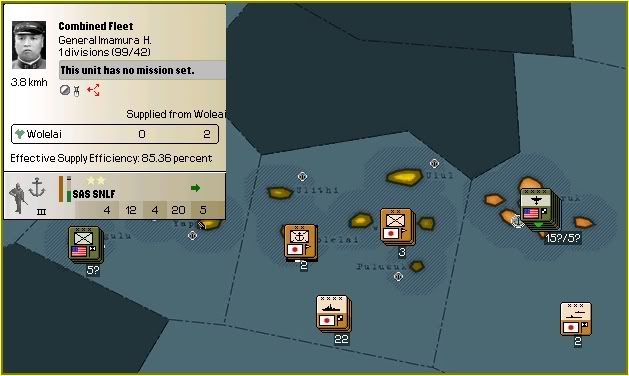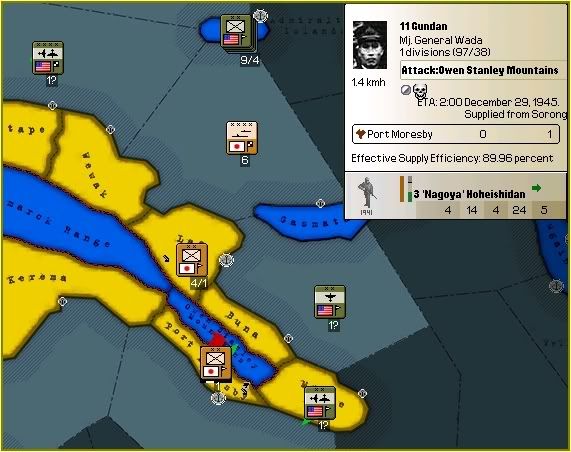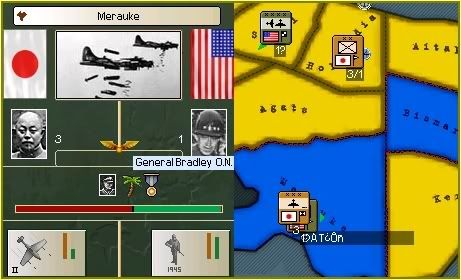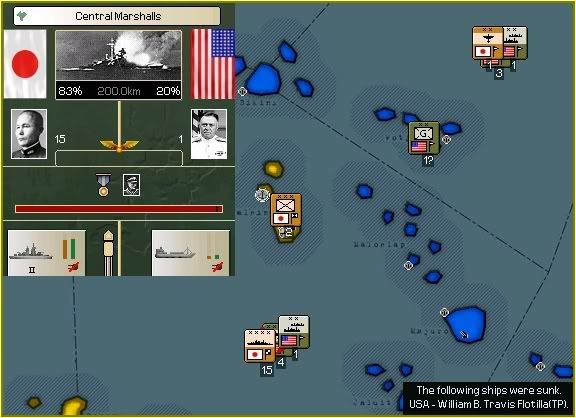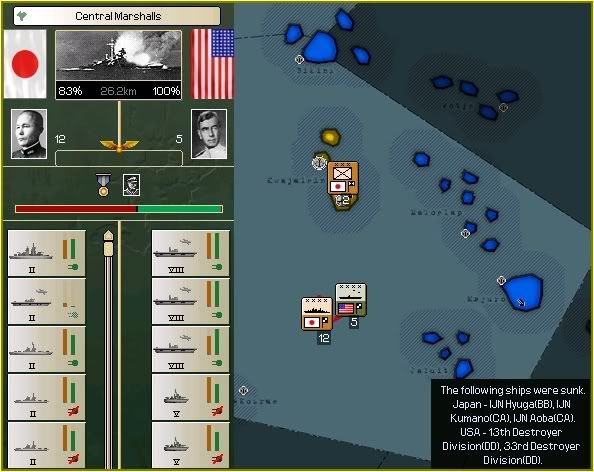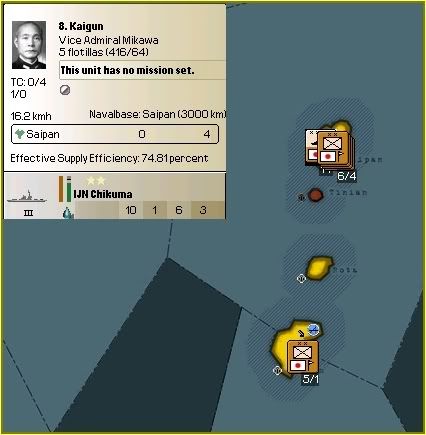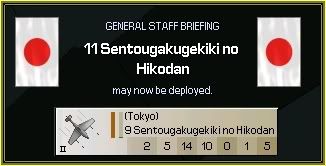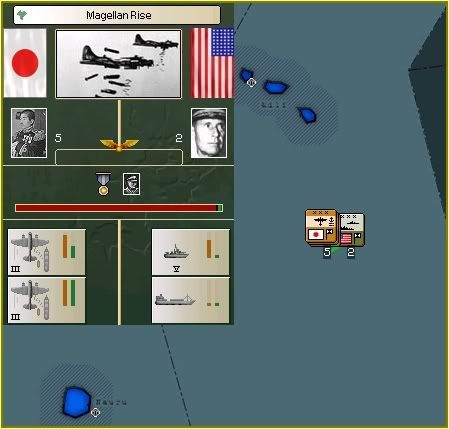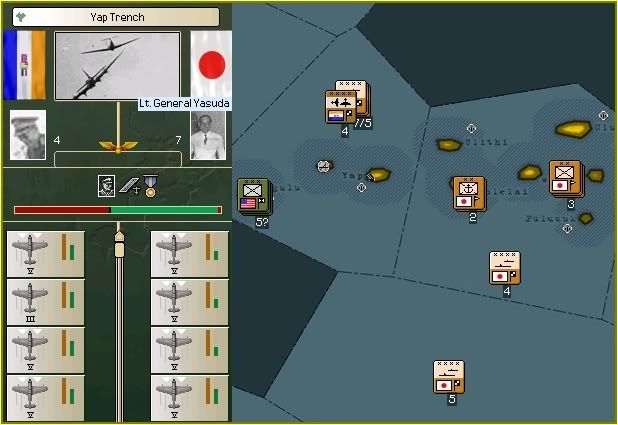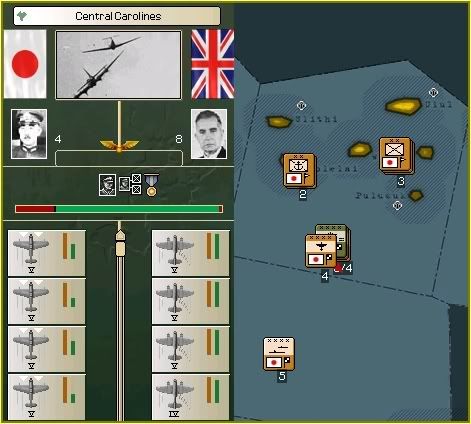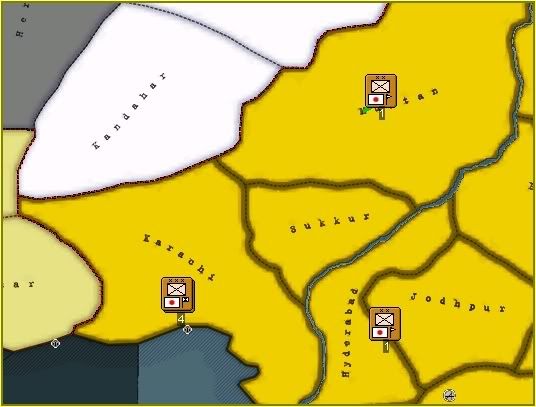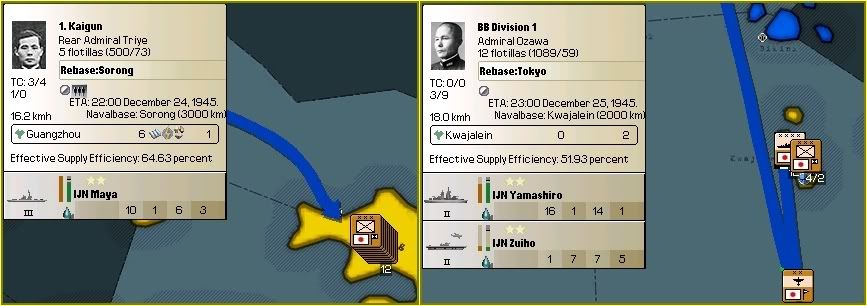0000 December 17th 1945.
Airforce Offices. Tokyo, Japan.
Jun had received word from Ginjiro of the latest aircraft to roll off Japan's production lines. They would be needed.
Three more Close Air Support squadrons deployed to Fukuoka before heading south to Davao to build up organisation prior to active service.
0000 December 18th 1945.
BB Division 1 Flagship. IJN Yamashiro, Kwajalein.
The Naval bombers had wasted no time getting airborne to patrol the Marshall Islands. They would not find any capital ships for the time being but they did discover an old adversary.
Spruance had apparently lost enough ships by now that he was only being trusted with a Transport fleet. Neither of his latest charges would stay afloat for long as both Ichimaru and Genda exacted revenge for Yamamoto. It should take the Americans a while to recover the Admiral after his latest mishap.
A second South African fighter wing had shown up over the Carolines and it had engaged two Japanese Interceptor wings. Lt. General Yasuda's three squadrons would take the brunt of the damage for the Japanese while Tanaka's wing inflicted large losses on the South Africans. Both of their interceptor and fighter wings were now grounded after suffering badly.
Tanaka would find his own wing grounded for repairs after another encounter at 2100 hours on the 18th. He intercepted two full British and American Tactical bomber wings over the Central Carolines. Fortunately they had no escorts with them but damage was sufficient all around to ensure that every wing involved would need some time to repair.
2300 December 19th 1945.
North China Army Headquarters. Lanzhou, China.
Higashikuni had little to do but wait. The British attacks in India had been forced backwards and the Soviets seemed reluctant to pick a fight with the Imperial Japanese Army.
All territory in India was now back under Japanese control with the capture of Multan. Five infantry divisions would soon be fully dug in to await another inevitable Allied build up to the west of Karachi.
0800 December 20th 1945.
BB Division 1 Flagship. IJN Yamashiro, Kwajalein.
Ozawa had waited for a few days for the American Carriers to be well clear of the area before he gave orders for BB Division 1 to head home to Japan to conduct further repairs.
Admiral Triye had also picked up the last three divisions slated for future operations. He left Guangzhou, in southern China, and headed for Sorong. Fifteen divisions would soon be ready to be used for a major assault somewhere in the Pacific.
Lt. General Tadaki had been embarked in Sorong and had now begun the invasion of Merauke to reclaim the province for Japan. Cover was provided by Carrier Group C as it was more prudent to guard against a possible Carrier Task Force with another one when the battle could not be dictated. Tadaki would capture Merauke on the 22nd providing there was no change in plans.



